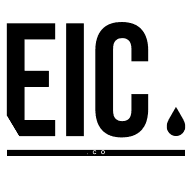Welcome to our deep dive into the world of editorial guidelines and standards. This post will explore the importance of these standards, their role in maintaining quality, and how they shape the content we consume daily. We'll also discuss how to create and implement these guidelines effectively.
The Importance of Editorial Guidelines and Standards
Editorial guidelines and standards serve as the backbone of any publication. They ensure consistency, quality, and credibility. Without them, the content may appear disjointed and unreliable.
These guidelines act as a roadmap for writers and editors. They provide clear instructions on the style, tone, and structure of the content. This consistency helps build a recognizable brand voice that resonates with the audience.
Standards, on the other hand, uphold the quality of the content. They set the bar for what is acceptable and what isn't. These standards can cover everything from factual accuracy to the use of language. They ensure that the content meets the expectations of the audience and maintains the reputation of the publication.
The Role of Editorial Guidelines in Content Creation
Editorial guidelines play a crucial role in content creation. They provide a clear framework for writers to follow, ensuring that all content aligns with the publication's goals and audience expectations.
These guidelines can cover a wide range of elements. They may dictate the tone of voice to use, the formatting style to follow, or the type of language to avoid. They can also provide guidance on more specific elements, such as the use of images, links, and SEO keywords.
By following these guidelines, writers can create content that is consistent, engaging, and on-brand. This not only improves the quality of the content but also enhances the audience's experience.
The Role of Standards in Upholding Quality
Standards are the gatekeepers of quality. They ensure that all content meets a certain level of excellence, regardless of who creates it.
These standards can cover a variety of areas. They may focus on factual accuracy, requiring all content to be thoroughly researched and fact-checked. They may also focus on language use, ensuring that all content is clear, concise, and free of errors.
By upholding these standards, publications can maintain their credibility and trustworthiness. This is crucial in today's digital age, where misinformation can spread quickly and damage a publication's reputation.
Creating Effective Editorial Guidelines
Creating effective editorial guidelines requires a deep understanding of your publication and its audience. You need to know what your audience expects and how your publication can meet those expectations.
Start by defining your publication's goals and values. What do you want to achieve with your content? What values do you want to convey? These answers will form the foundation of your guidelines.
Next, consider your audience. What do they expect from your content? What style and tone resonate with them? Use this information to shape your guidelines.
Remember, your guidelines should be clear and specific. They should provide concrete instructions that writers can easily follow. Avoid vague or ambiguous language that could lead to confusion.
Implementing Editorial Guidelines and Standards
Implementing editorial guidelines and standards can be a challenging process. It requires clear communication, training, and ongoing enforcement.
Start by communicating the guidelines to all content creators. Provide them with a copy of the guidelines and explain why they are important. Make sure they understand the guidelines and are comfortable following them.
Training is also crucial. Provide workshops or training sessions to help content creators understand and apply the guidelines. Use real examples to illustrate how the guidelines work in practice.
Enforcement is the final step. Editors should check all content against the guidelines and standards before publication. They should provide feedback to writers and help them improve their adherence to the guidelines.
The Future of Editorial Guidelines and Standards
The world of content creation is constantly evolving, and editorial guidelines and standards must evolve with it. As new trends emerge and audience expectations change, publications must adapt their guidelines to stay relevant.
This doesn't mean abandoning your core values or standards. Instead, it means updating your guidelines to reflect new realities. This could involve incorporating new content formats, adapting to new language trends, or addressing new ethical considerations.
The future of editorial guidelines and standards is dynamic and exciting. By staying adaptable and responsive, publications can continue to produce high-quality, relevant content that resonates with their audience.
Wrapping Up: The Power of Editorial Guidelines and Standards
Editorial guidelines and standards are more than just rules. They are tools that help publications create consistent, high-quality content that resonates with their audience. By understanding, creating, and implementing these guidelines effectively, publications can enhance their credibility, engage their audience, and navigate the ever-changing landscape of content creation.

